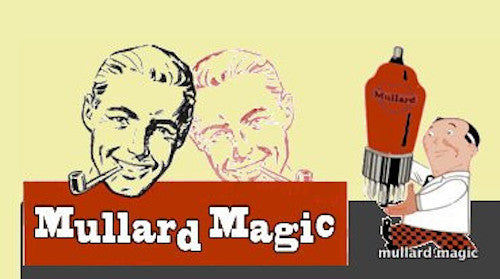
VALVE TYPES & MANUFACTURING TECHNIQUES (iii) - TUNGSTEN
Share
We've seen so far in my blog series on valve types and manufacturing techniques that fine wire is an important material used in the valve making process. To recap, tungsten wire is used as filament wire with molybdenum being used as grid and filament supports. Just to give you an idea of HOW essential this material was, in the Mullard Blackburn plant heyday of the early 1950s over 2500 MILES, yes, MILES of wire was used every WEEK in valve manufacture.
So, where does the tungsten come from?, how is it formed into wire?, well paisan, read on and all your questions will be answered..............
Tungsten is derived from it's ore, in particular, the form known as Scheelite which is calcium tungstate having the chemical formula CaWO4. This type of ore was originally found in Sweden in 1820 where it was first named Tungstan - which translated as 'heavy metal', however, in 1821 it was renamed Scheelite in honour of it's discoverer Carl Scheele.

As an ore, Scheelite is fairly unimpressive apart from being heavy, but it does fluoresce a bright blue when exposed to UV light at 254nm. Most of the ore used in valve manufacture was mined in Australia, with indigenous deposits coming from mines in Cumbria and Cornwall. The Scheelite arrived at Mullard's Blackburn plant as small pebbles packed in coal sacks. A giant ball mill, originally designed for the limestone quarrying industry was used to reduce the ore to a fine graded material having a particle size distribution of between 0.1 to 0.15mm diameter - a process that took 6 days!
The graded ore was then reacted first with hydrochloric acid and then heated to 400 degrees Centigrade to form the bright yellow Tungsten (VI) Oxide which occurs in accordance with the following formulae: -
CaWO4 + 2 HCl → CaCl2 + H2WO4
H2WO4 + heat → c + WO3
Tungsten (VI) Oxide is in turn reduced to metallic Tungsten in powder form by reduction in a stream of Hydrogen at 650 degrees Centigrade as per the following formula: -
WO3 + H2 → 3H2O + W
Although the hydrogen was both expensive and dangerous it had to be used as a reducing agent as the cheaper and safer alternative Carbon, would react to produce Tungsten Carbide - good for sandpaper but no good for valves.
So there we have it, pure tungsten, if you are still awake, please 'tune in' next week for the next scintillating episode in this story and I'll explain how the grey powdered Tungsten became wire at Mullards!
PS: I did tell you all that I used to be a Chemist before I turned into a valve salesman - didn't I????
